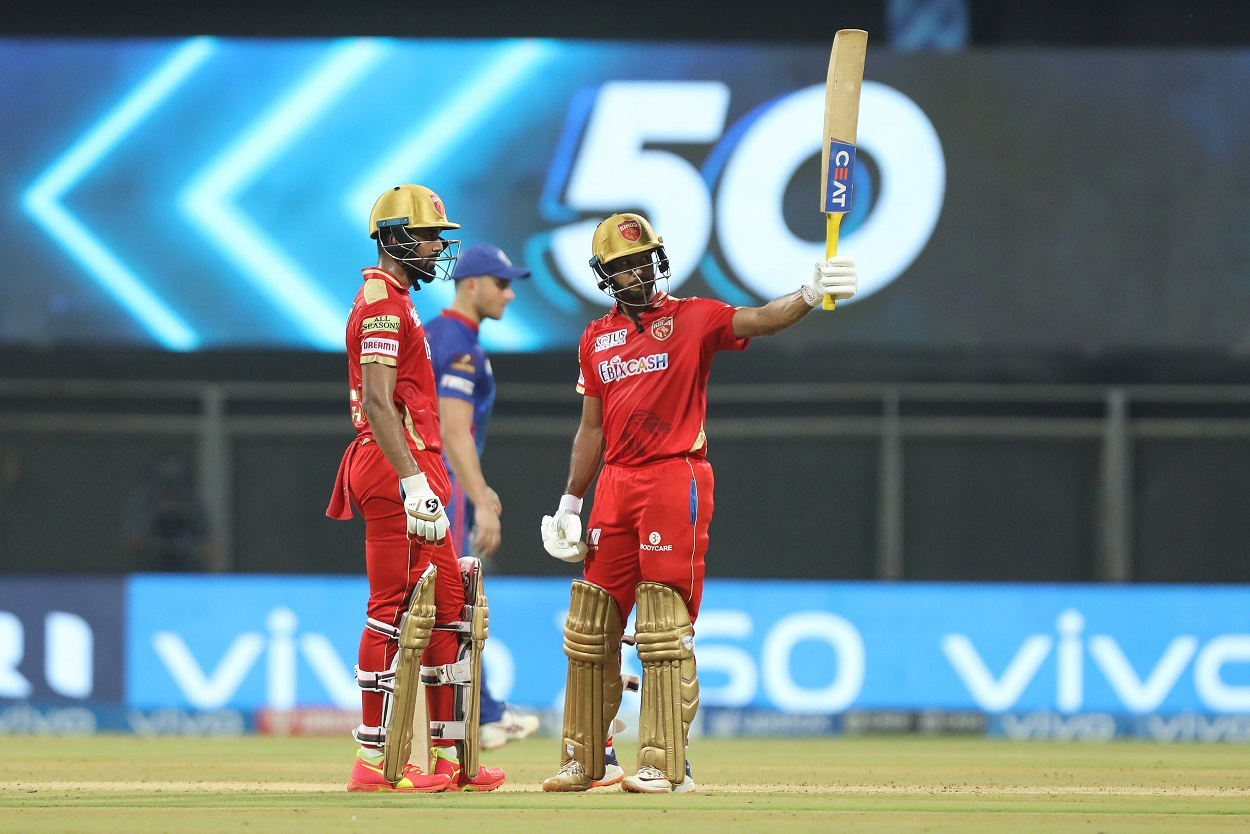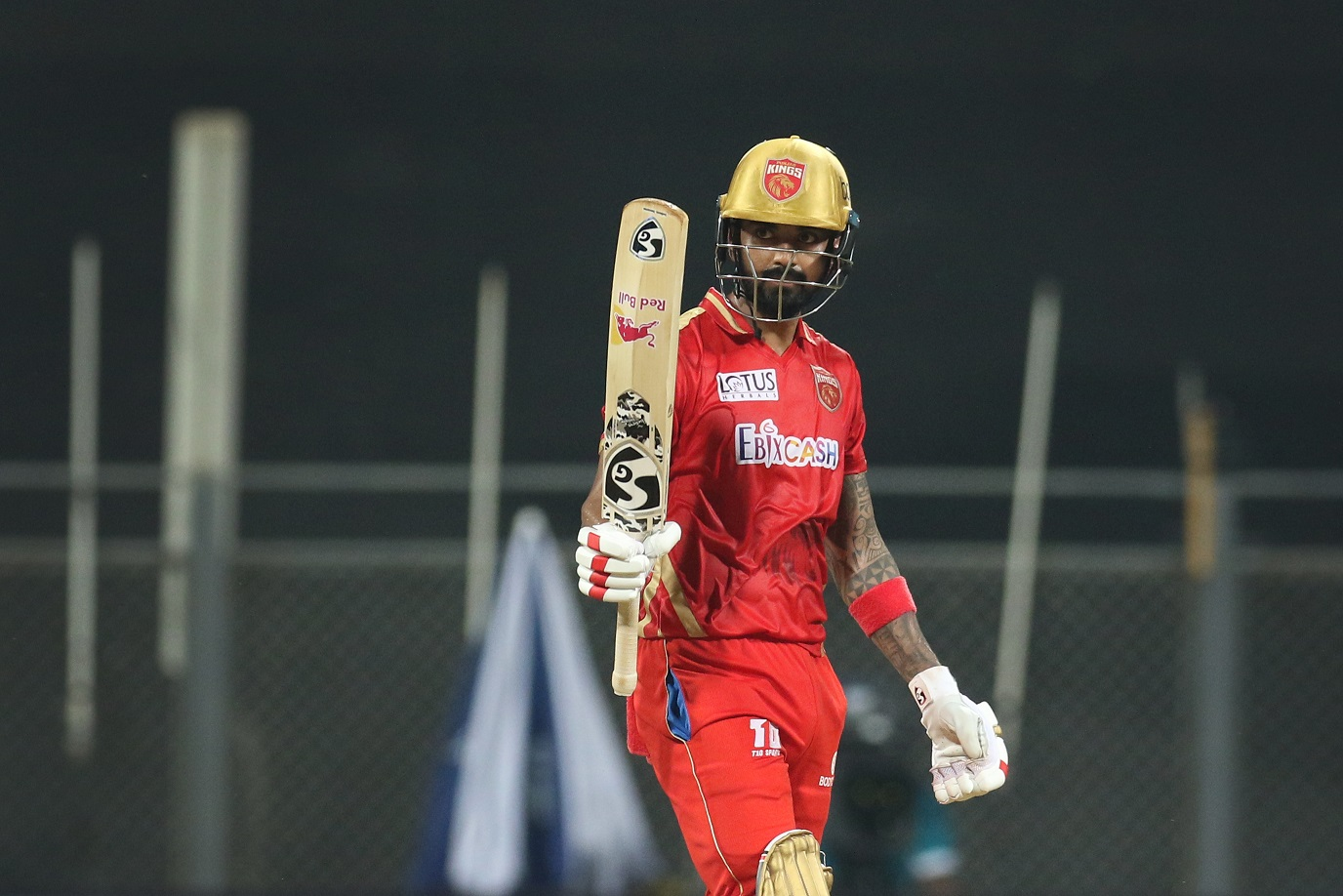 OPINION
OPINIONThree hits into IPL 2021, KL Rahul is in the upper echelons of the run-making charts. The Punjab Kings skipper is one of only four batsmen to have struck two half-centuries, and his strike-rate of 145.37 is significantly better than Virat Kohli (110.93) and Rohit Sharma (130.55), inarguably two of the greatest white-ball batsmen of all time.
Rahul seems to be ticking all the boxes, as is expected of not just the captain but also the best batsman in his team. Any criticism of his approach might appear puerile and unwarranted. And yet, the opener is under the microscope, particularly after heralding his 29th birthday with a 51-ball 61 against Delhi Capitals on Sunday night.
Even in isolation, 61 off 51 at the top of the tree (strike-rate 119.60) might appear underwhelming unless one is confronted with tricky conditions like the ones on offer in Chennai. The Wankhede Stadium, however, has for the most part thrown up excellent batting surfaces. Furthermore, Rahul had the luxury, for a while, of playing himself in with his opening partner and great mate Mayank Agarwal rediscovering run-scoring ways in spectacular style.

The two Karnataka men put on 122 for the first wicket when Agarwal departed. A chunky 44 deliveries in the bank and with powerful ball-strikers Chris Gayle, Nicholas Pooran, Deepak Hooda and Shahrukh Khan to follow, Punjab Kings had reason to believe 210 was the bare minimum. Yet, they managed only 195, and that thanks mainly to Hooda and Shahrukh adding 16 in the last seven balls.
Where does Rahul figure in all this? The skipper followed his partner to the dugout 16 deliveries later, early in the 16th over. There is no gainsaying what heights Punjab might have reached had Rahul batted through, like he had done in the opener against Rajasthan Royals, but by getting out when he did after having carefully set stall for a final flourish, Rahul had sold himself, and his team, short.
Rahul’s transformation from a free-stroking, uninhibited T20 player to a more watchful accumulator has coincided with his elevation as captain of his franchise. In his first season in charge of what was Kings XI Punjab in 2020, he amassed an impressive 670 runs, but scored at a modest 129.3 runs per 100 balls in a conscious change of tack from the previous two editions. Rahul set himself up as the fulcrum around which the team revolved. He was to be the steadying influence, the constant at one end for the first three-fourths of the innings while the booming guns exploded at the other. In theory, that’s flawless. After all, his strike-rate between overs 16 and 20 since last season is a rampaging 191.22, compared to corresponding numbers of 120.48 in the first six overs, and 132.02 between overs 7 and 15 respectively.
The problem with such theories is when something like Sunday happens, and Rahul isn’t around to cash in during his most productive period. Invariably, that will throw a spanner in the works, and in a format where every run is gold dust, no team can afford to avoidably end up 15-20 runs light every third game or so.
Rahul has been a staunch verbal defender of his methods, which is only to be expected, but he is smart enough to understand the pitfalls of a dangerous tactic that can appear peachy when it comes off, and downright silly when it doesn’t. It’s also likely that head coach Anil Kumble will be in his ear, suggesting that while the no-risk approach early on makes sense, it shouldn’t be at the expense of lack of strike-rotation.
For all his unquestioned talent – he had smashed international hundreds in all three formats within 21 innings of his India debut in late 2014 – Rahul gets far too bogged down in the Power Play, when the field restrictions cry out to be exploited. On Sunday, for instance, while Agarwal had clattered to 30 off 13 deliveries, Rahul’s riposte was a stately 23 off 24. Significantly, because he doesn’t much bunt the ball into gaps and look to turn the strike over, he ended up playing almost twice as many balls as his more fluent and attacking partner. That’s precisely the opposite of what the T20 game demands.

Perhaps, Rahul is taking the responsibility and cares of captaincy too seriously. Perhaps, he is exaggerating the role of a sheet-anchor, if there is the need for any such entity in the 20-over variant. Whatever the reason, Rahul has to perceptibly shift gears, post-haste. Punjab Kings don’t need their skipper to be just prolific, they also require him to get those runs quicker if they are to resuscitate a floundering campaign that has brought them a solitary victory – just about – in their first three games.